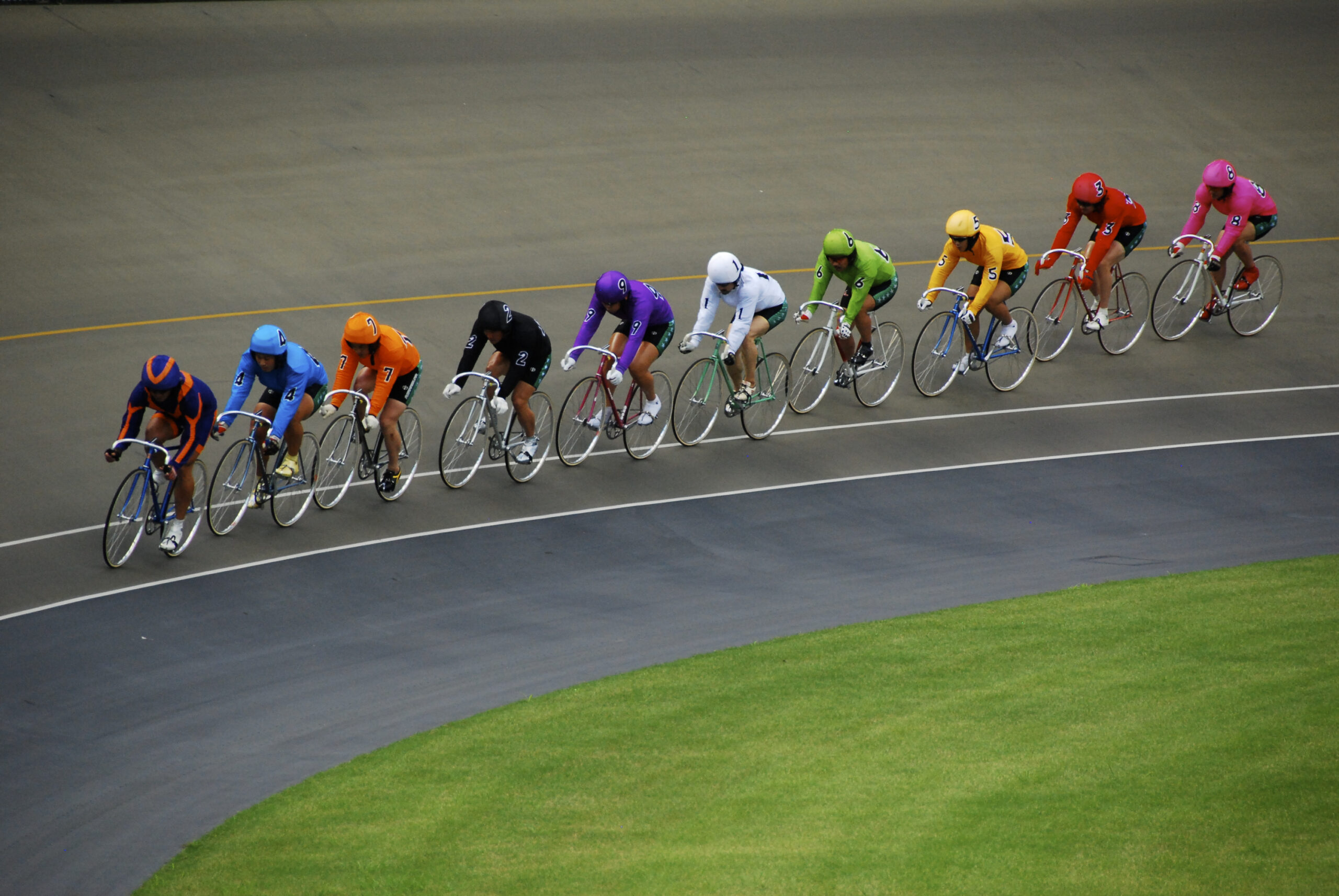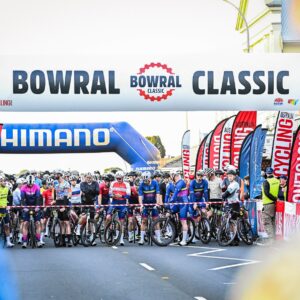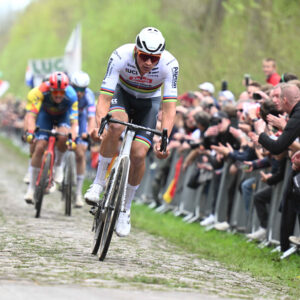Fast, colourful and enigmatic, Japan has a complicated relationship with the high-octane world of keirin racing, as Peter Maniaty explores.
This is the second time I’ve set out to write this story. The first happened more than a decade ago, but ended almost as quickly as it began. For when I approached the Japan Tourism Agency for assistance their response was decidedly cool. The more I probed, the more they (very politely) obfuscated. In time, I realised why. Keirin racing, for its considerable tradition and popularity in Japan, also carries an unfortunate social stigma. In stark contrast to the vibrant, Wiggles-like jerseys and helmets worn by the riders, the sport itself is considered murky. A little grubby. Not something the powers that be in Japan are especially proud of. A subculture, through and through.
It’s a tale brilliantly told in the 2022 book, War on Wheels: Inside Keirin & Japan’s Cycling Subculture by Tokyo-based British journalist, Justin McCurry, who ventures: “Mainstream Japanese society (has long) looked down its collective nose at the velodromes and the men who frequent them … for all its popularity with punters, keirin has only been able to retain its place in Japan’s sporting firmament through a grudging acceptance that the benefits it brings to local economies – and its undeniable spectacle as a sport – eclipse concerns over the corruption of public morals.” Like I said, it’s complicated.
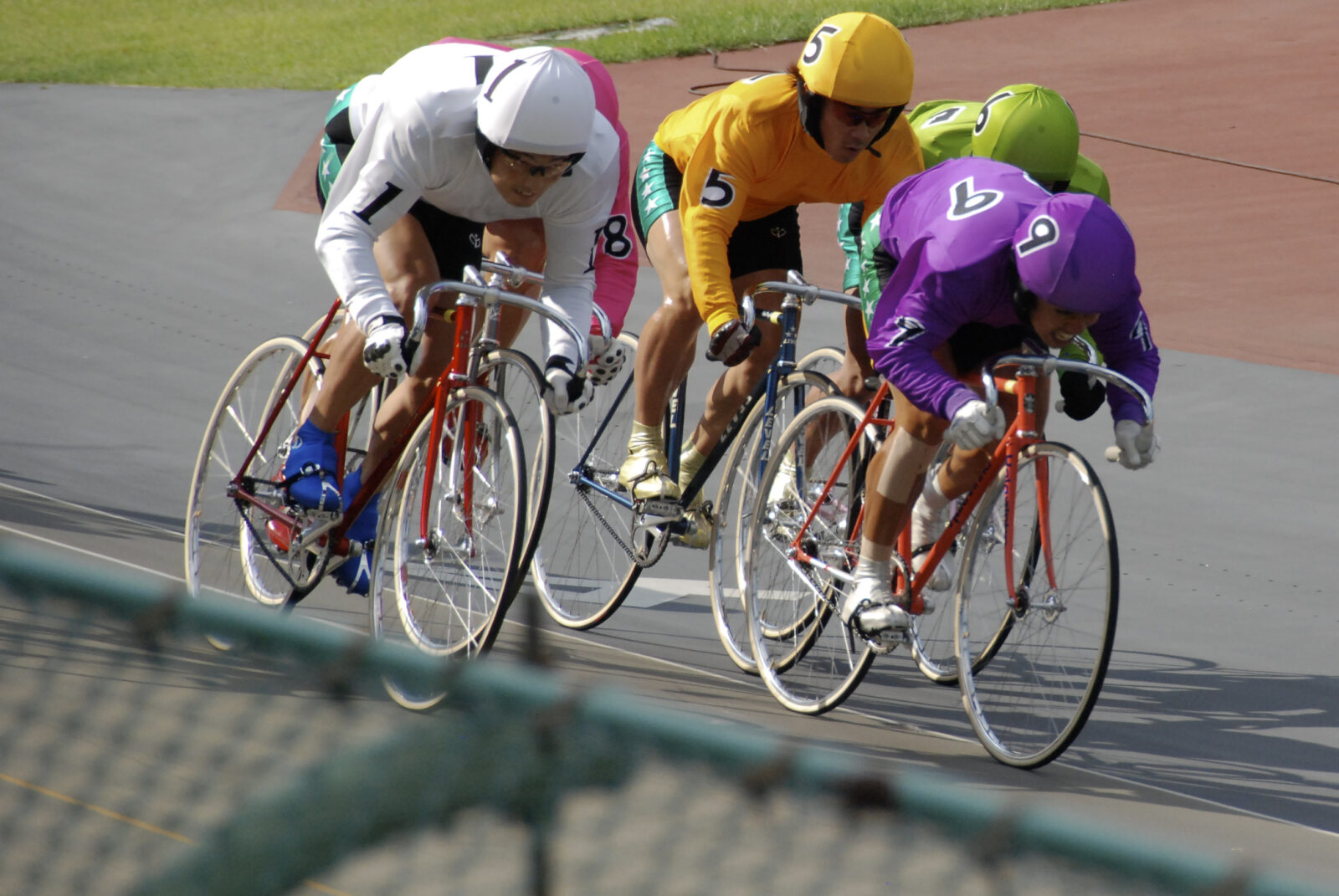
The history
The origins of keirin racing can be traced back to the rebuilding of Japanese society after WW2. To help stimulate depressed local economies, governments built velodromes and made keirin racing one of just a handful of sports the public could legally gamble on (still the case today), with the bulk of the proceeds invested back into public infrastructure.
Kokura in the southern Japanese city of Kitakyushu (incidentally, the original target for the second atomic bomb in 1945) hosted the first-ever keirin race in November 1948. Others soon followed across Japan, despite keirin’s early years often marred by violence, race-fixing and the involvement of Yakuza crime syndicates. At its peak, there were more than 70 active keirin velodromes in Japan. Today, there are still forty-three, hosting competitions for men and women everywhere from Hokkaido in the north to Kyushu in the south, and keirin remains big business. How big? In 2023, more than ¥1.2 trillion was wagered on keirin racing in Japan. That’s around AUD$14 billion.
The racing
The name and format may be similar, with riders speeding up gradually behind a pace-maker before being released for a frenetic surge to the finish line. But Japanese keirin is a very different beast from its international sibling, which first appeared at the UCI Track World Championships in 1980 for men and 2002 for women.
For starters, the cavernous, eerily empty velodromes in Japan are larger and flatter than their international counterparts, typically between 330-500 metres long. The field sizes are bigger with nine riders in men’s races and seven in women’s events. The racing is often considerably more physical, especially in the men’s events where blocking, hooking, shoulder barging and even head butts are common practice. Shaped by a complex tapestry of traditions, the tactics are also highly nuanced with riders obliged to announce their intended strategy prior to racing, with penalties and even disqualification for those who fail to adhere or causing another rider to crash.
Race distances are considerably longer. The shortest events for men and women are around 1,600 metres, with the bulk of men’s events held over 2,000m. Finals for major events can stretch to 2,400m, while the men’s season-ending Keirin Grand Prix is contested over a whopping 2,800m – nearly double the distance of a UCI keirin (1,500m). Race meets, typically held over four days, are also conducted under strict lockdown conditions for riders. No phones. No internet. No contact with the outside world.
The riders
Japanese keirin generally comprises three different kinds of riders who rely on different strategies to secure victory. Senko ride at the front and attack from long range, often with as much as 800m still to go. Makuri sit second wheel and usually protect the Senko rider, before starting their own sprint from about 200-400m out. Oikomi are third wheel and block hard for the Makuri and the Senko if someone tries to sneak past, before unleashing a short sprint in the closing metres. One of the strongest traditions, respect for your elders, sees younger riders often going first, sacrificing themselves for the older riders behind.
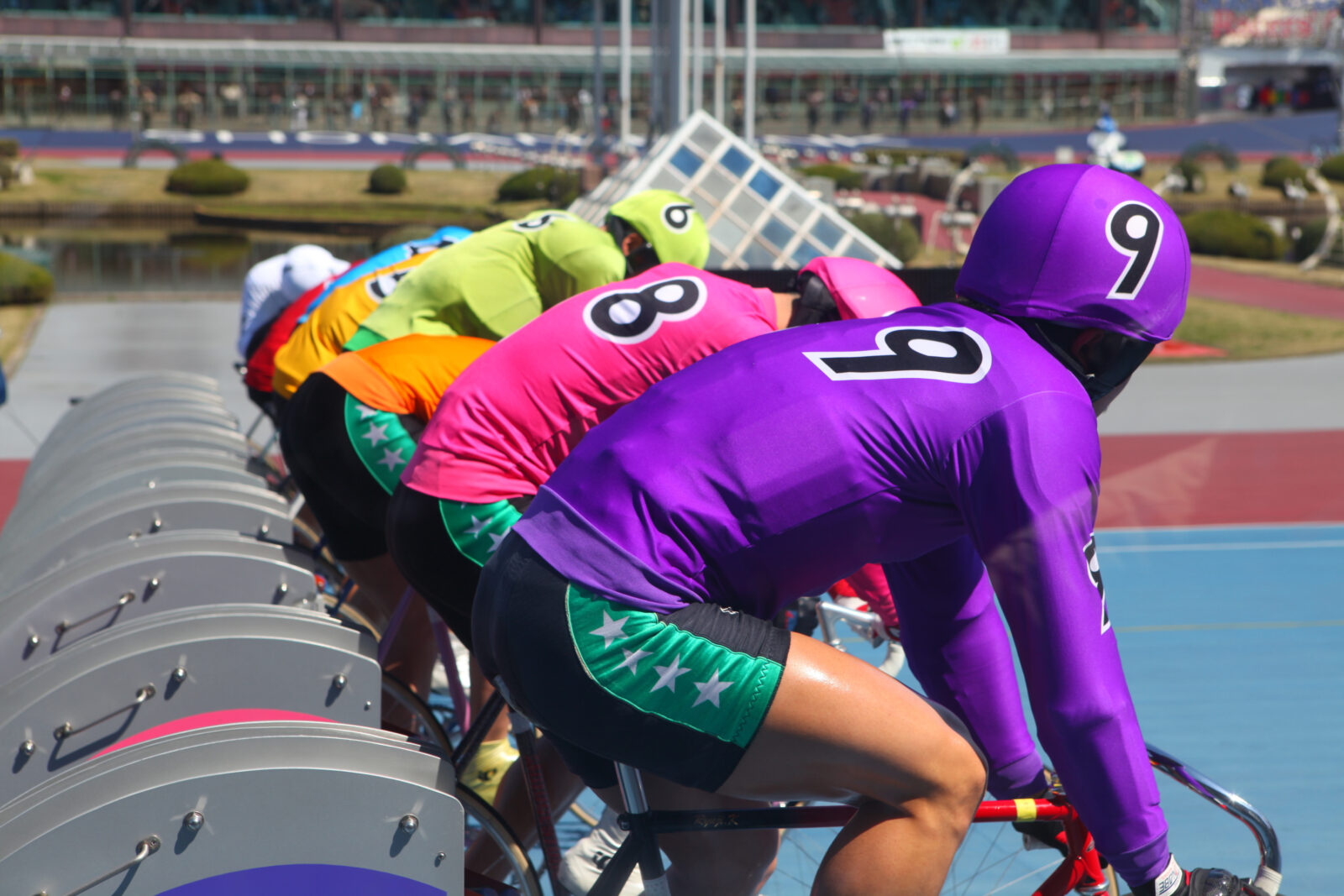
The equipment
In stark contrast to the technological arms race we witness each Olympic cycle, keirin in Japan is all about the riders, not their bikes. Given the central role of gambling, integrity is critical and the JKA (Japan Keirin Autorace Foundation) enforces a strict system of standards to ensure no rider gains an unfair advantage based on equipment. All bikes, for example, must be handmade by a certified builder using chromoly steel and approved components only.
The school
Regardless of your talent – you could be Harrie Lavreysen or Joe Bloggs as far the JKA is concerned – you can’t simply race keirin in Japan. First you must gain your racing licence. For Japanese-born riders, this means completing 11 months of live-in study at the legendary Keirin School in Shuzenji, about 110km south-west of Tokyo. Here riders learn everything from the rules, tactics and traditions of keirin to how to best care for their bikes and their body. The JKA does accommodate a select number of hand-invited international riders, allowing them to race after completing abbreviated ‘educations’ at Keirin School, usually no more than a couple of weeks. However, foreigners are not permitted to compete in the highest tier of events.
The rankings
Japan has almost 2,500 professional keirin riders spanning a wide range of abilities, records and ages. The vast majority are still men, however, women’s keirin (reinstated in 2012 after being scrapped back in 1964 due to “lack of interest”) is growing in popularity with a current pool of around 175 riders. A points-based ranking system is used to determine who is allowed to compete in which races – and who isn’t. In simple terms, the better you perform, the higher your ranking will become. The holy grail of keirin rankings is known as ‘SS’, a revered status bestowed upon the top nine points earners. Only these riders get to compete in the year-ending Keirin Grand Prix, where prize money can be more than ¥100 million, or close to AUD $1 million.
The internationals
Given the lucrative prize-money on offer, it’s no surprise numerous international track sprinters have sought to compete in Japan. Sir Chris Hoy raced briefly back in 2005, less than a year after being crowned Olympic Champion in the Kilo in Athens (Hoy would go on to be Keirin World Champion four times). France’s two-time Keirin World Champion, Francois Pervis, has raced regularly in Japan since 2010. Australia’s Shane Perkins and Kaarle McCulloch have also completed stints in Japan, with Perkins earning himself the nickname ‘The Magician’ for his ability to evade the best efforts of blockers.
Just as it has proved challenging for internationals to ‘crack’ keirin in Japan, the reverse has also been true. Despite thousands of Japanese athletes holding licences, it has only occasionally translated to success on the world stage. For decades, Japan was conspicuously, and somewhat paradoxically, absent from the highest echelons of international keirin racing – the one exception being the 1987 UCI World Championships in Vienna where Harumi Honda took gold ahead of Italy’s Claudio Golinelli. However, things are now changing. In fact, for the first time Japan ended 2024 with the UCI World Champions in both the men’s (Kento Yamasaki) and women’s (Mina Sato) keirin. Japan is still waiting for its first Olympic Champion, with its best result coming at the 2008 Beijing Games when Kiyofumi Nagai claimed bronze.
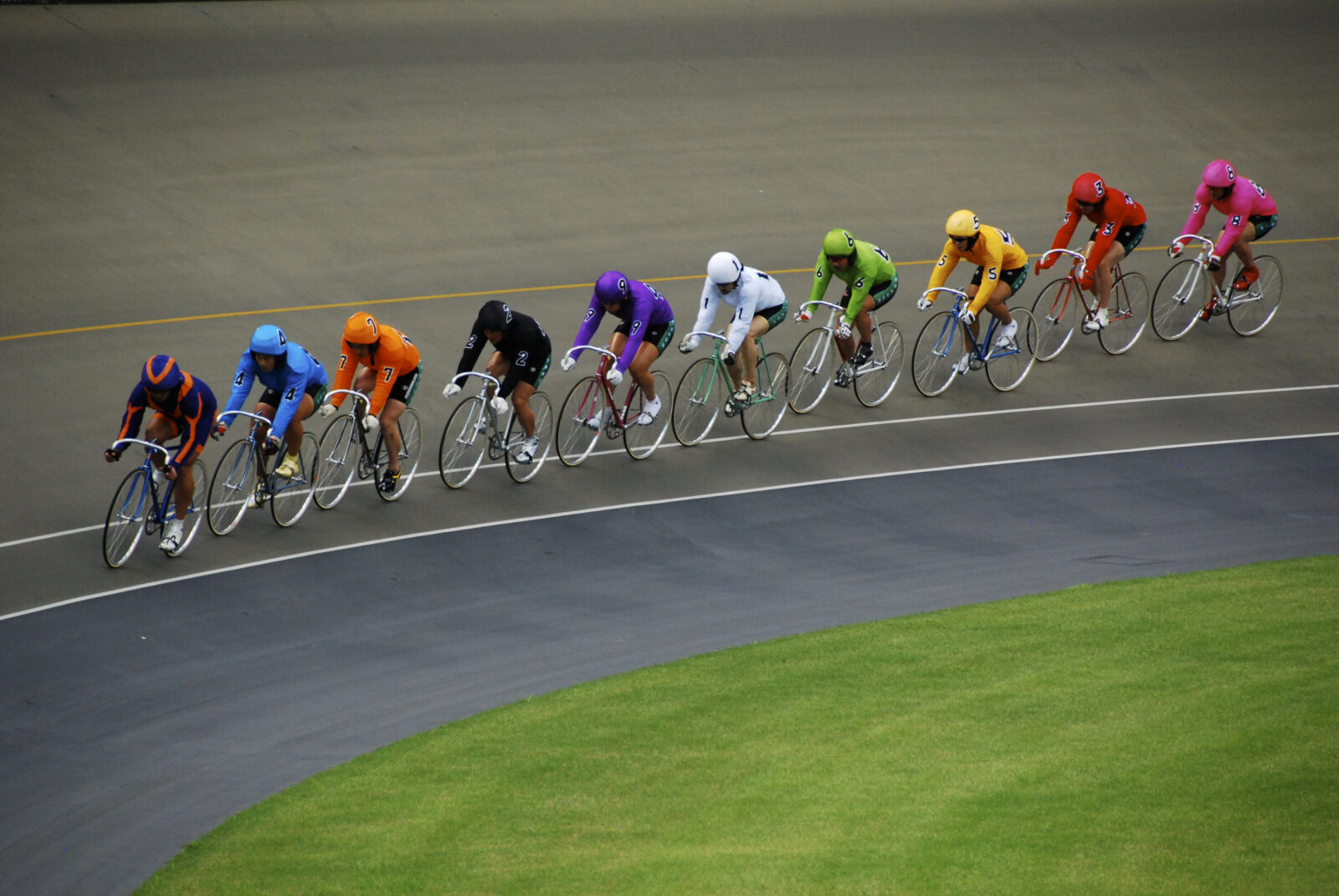
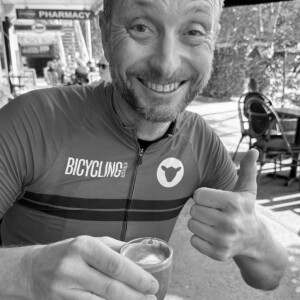
Peter Maniaty
Peter Maniaty - Peter is Bicycling Australia’s senior journalist, and highly respected in the world of cycling. From bike reviews, to destination features and nitty gritty opinion pieces, he’s a gun writer.
